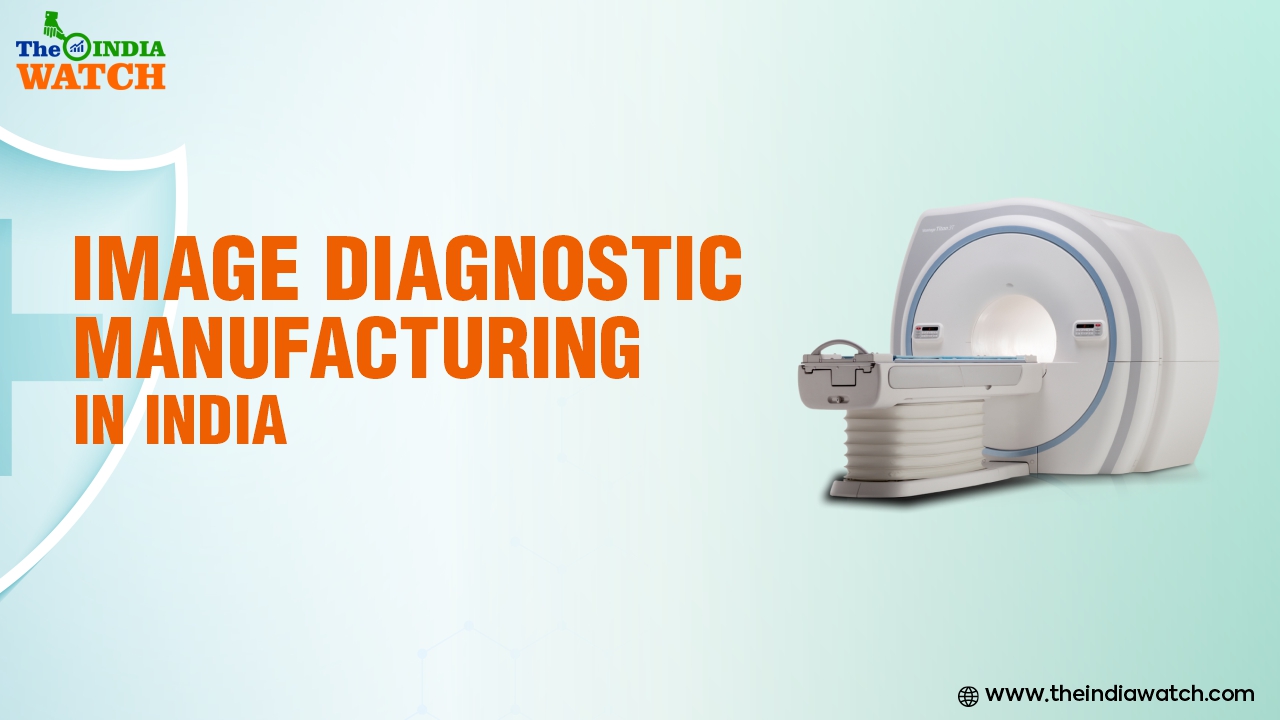-
Your trusted market research partner
- info@theindiawatch.com
- 8076704267

Indigenous businesses should focus on Image Diagnostic Manufacturing in India
The Indian health care sector is sized at around USD 349.1 billion in India in FY 22, jumping from 272 billion in FY 20. By FY 26, the health care industry in India is slated to reach USD 773 billion, growing at a CAGR of 22%, as per the analysis by The India Watch, an India-focused market research and feasibility service provider.
The industry is steered by a host of structural factors such as a rise in disposable income, growth in middle-income households, rise in health awareness in both cities as well as smaller towns, spurred privatization and much more.
Though the GOI’s healthcare budget as the percentage of the GPD has declined, the governing agencies in India continue to support the healthcare industry through policy impetus. Generous PLI schemes and tax breaks have been introduced to enable growth in the industry. To further improve the investment climate, simplified FDI policies have been introduced in the past.
100% FDI has been allowed under automatic routes to develop hospitals in India. 100% FDI is allowed in Greenfield pharma and biotechnology projects. (For brownfield projects, the automatic route is allowed until 74% FDI, after which government permission is required.) 100% FDI under automatic route is allowed for medical device manufacturing. India’s progressive FDI policy has been instrumental in channelizing international capital. Between 2000- 2021, total FDI into the health care sector amounted to over USD 27.7 billion.

Medical Device is still an underutilized category
In the Indian health care industry, the medical device continues to be an underutilized category, with the overall market sized at around USD 12 billion. This is in stark contrast with the pharma industry, which has registered a steady growth over the years. The pharma market is sized at USD 53.2 billion in FY 22, including e-pharma retail which is sized at USD 1.045 billion, as per the research by The India Watch.
Meanwhile, despite rise in demand for pathology and diagnostic services, the medical device markets has shown limited growth. The total amount of FDI received in the segment is USD 2.2 billion from 2000-2021, much lower as compared to other categories such as hospitals & health care centers, pharma, etc.
A fragile OEM ecosystem, lack of quality of human resources, and large ticket size of investments have undermined growth in medical device manufacturing in India. The category is import-dependent or works on refurbished devices, with limited organized players in the segment.
However, this can change in the near future. GOI has introduced a lucrative USD 419 million PLI (production linked incentive) scheme for medical device manufacturing in India. This covers diagnostic equipment, radiology machines, implants, etc.
Manufacturers can apply for a 5% incentive on incremental sales. Similarly, GOI is also building new medical device parks in the state of Himachal Pradesh, UP, TN, etc. with common infrastructure facilities. Fully functional parks can aid in systematically reducing the cost of operations thereby making indigenous producers competitive.
The enriching road ahead for imaging device manufactures
In the medical device industry, the diagnostic imaging market though still small is set for steady growth in the times ahead. The market was sized at USD 977 million in FY 21 and is growing at a CAGR of 17.7% as per the research by The India Watch. It is set to reach a size of USD 2.2 billion by FY 26. Ultrasound devices constitute the biggest market share comprising 40.7% followed by MRI (21%).
India’s growing focus on preventive healthcare rather than cure is dovetailing the imaging market towards vigorous growth. Ultrasound is one of the fastest growing segments, with an expected CAGR of 20.4%. Apart from regular applications such as cardiology, urology, gynaecology, etc. other upcoming treatment segments such as fetal medicines and IVF will also drive growth in ultrasound demand. The demand for USG devices is no longer limited to big corporate hospitals, specialty hospitals, and diagnostic chains but also includes mid-sized nursing homes and pathology centers, medical colleges, and government hospitals, etc.
The CT scanner market will grow at a CAGR of 13.4% in the coming years. As the device is the cornerstone of modern radiology practice, the category will continue to thrive . The growing prevalence of malignancy, orthopaedic traumas, and cardiovascular diseases will further give push. As cancer awareness is increasing in India (including Tier 2 & 3 cities as well) the demand for mammography and PET scan will continue to pick up.
The growth of organization and structure in India’s pathology industry will also accelerate the demand for imaging devices. Major pathology chains such as SRL, Thyrocare, Mayo Clinic, etc. earn close to USD 200 million in revenue annually through the imaging section itself.
While the demand for imaging devices is increasing, the high cost of equipment has undermined the growth of the segment. A large portion of the market is run by refurbished device, especially in rural areas and small pathology centers. Presently there are a few big manufacturers such as Philips Healthcare, GE Healthcare, Toshiba, Siemens etc. which have manufacturing facilities in India.
However, the industry lacks indigenous manufacturers. For the segment to reach its maximum potential, it is important to invest in local manufacturing facilities. The Government’s generous PLI scheme and medical device parks are positive steps in the direction, as they will help in lowering the cost of production. The government should also look forward to lowering the GST and customs duties on the import of components, as this will further help the sector to accelerate.
How The India Watch can help
The India Watch is an India-based market research and business feasibility advisory with a strong understanding of the Indian healthcare sector. It offers a range of services
- Custom-made market research surveys, stakeholder interviews, qualitative surveys, etc.
- Feasibility study and business plans for the new hospital, healthcare centre, diagnostic labs, etc.
- Business research partner services for healthcare chains, corporate hospitals, PE investors, etc.
- Corporate deck, and business plan services for health tech start-ups.
- Competitive intelligence, pricing research, financial analysis and cash flow projections, etc.
- For any further query, feel free to drop a mail at info@theindiawatch.com

